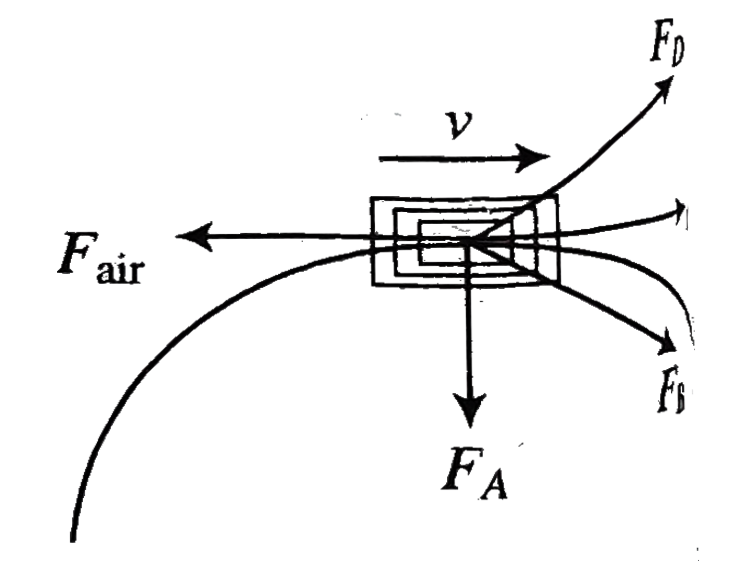A train has a constant speed of 40 ms−1 on a level road against resistive force of magnitude 3×104N. Find the power of the engine.
At constant speed, there is no acceleration, so the forces acting on the train are in equilibrium.
Therefore, F=R
∴F=3×104N or P=Fv
We have , power =3×104×40=1.2×106W
Topper's Solved these Questions
- BOOK - DC PANDEYCHAPTER - WORK, ENERGY AND POWEREXERCISE - CHECK POINT 6.120videos
WORK, ENERGY AND POWER
- BOOK - DC PANDEYCHAPTER - WORK, ENERGY AND POWEREXERCISE - CHECK POINT 6.220videos
WORK, ENERGY AND POWER
- BOOK - DC PANDEYCHAPTER - WORK, ENERGY & POWEREXERCISE - Level 2 Comprehension Based2videos
WORK, ENERGY & POWER
- BOOK - DC PANDEYCHAPTER - WORK, POWER AND ENERGYEXERCISE - E Integer Type Questions11videos
WORK, POWER AND ENERGY
Similar Questions
A motor boat is moving at a steady speed of20ms−1. If the water resistance on the boat is 6000 N, the power of the engine is ------------kW.
View SolutionA train weighing 100 metric ton is running on a level track with a uniform speed of 72kmh−1 . If the frictional resistance amounts to 0.5kg per metric ton, find the power of the engine
View Solution
Knowledge Check
- Question 1 - Select One
A car travels with constant speed on a circular road level ground in figure Fair is the force of air resistence acts opposite to the motion of car which of the other forces shown best represents the horizontal force of the road on the car's tires?
 AFCBFDCFADFB
AFCBFDCFADFB
An elevator that can carry a maximum load of 1500 kg (elvator+ passengers) is moving up with a constant speed of 2 ms−1. The frictional force opposing the motion is 3000 N. Find the minmum power delvered by the motor to the elevator in watts as well as in horse power (g=10ms−2)
View SolutionA 50 metric ton train has to run at 72 kmh−1. If the track is level and total resistance is 180th the weight of the train, find the power of the engine.
View SolutionA train of mass 2×105 kg has a constant speed of 20 ms−1 up a hill inclined at θ=sin−1(150) to the horizontal when the engine is working at 8×105 W. Find the resistance to motion of the trian. (Take ,g=9.8 ms−2).
View SolutionA car of mass m 1600 kg, while moving on any road, experience resistance to its motion given by (m+nV2) newton, where m and n are positive constants. On a horizontal road the car moved at a constant speed of 40 m/s when the engine developed a power of 53 KW. When the engine developed an output of 2 KW the car was able to travel on a horizontal road at a constant speed of 10 m/s. (a) Find the power that the engine must deliver for the car to travel at a constant speed of 40 m/s on a horizontal road. (b) The car is able to climb a hill at a constant speed of 40 m/s with its engine working at a constant rate of 69 KW. Calculate the inclination of the hill (in degree)
View SolutionAn electron experiences a magnetic force of magnitude4.60×10−15N, when moving at an angle of 60∘ with respect to a magnetic field of magnitude 3.50×10−3T. Find the speed of the electron.
View SolutionAn engine is hauling a train of mass m on a level track at a constant speed v. The resistance due to friction is f. What power is the engine producing? What extra power must the engine develop to maintain the speed up a gradient 1 in l. What is the new total power developed by the engine develop to maintain the speed up a gradient 1 in l. What is the new total power developed by the engine ?
View SolutionA car of mass 900 kg accelerates uniformly from rest to a speed of 60 km/h in a time of 2 s when traveling on a level road. If there is a constant resistance to motion of 20 N. Find the maximum power ( in kW) of the engine.
View Solution

